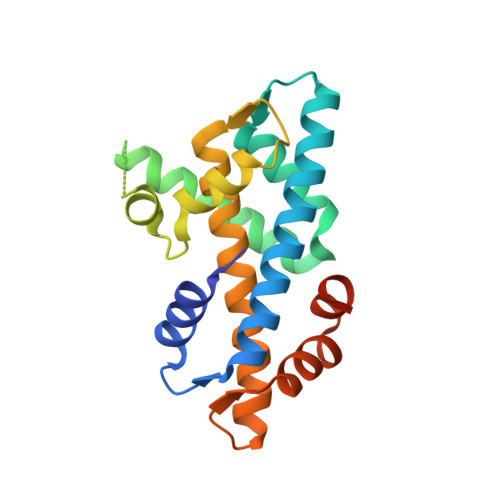Recognition of the inherently unstable H2A nucleosome by Swc2 is a major determinant for unidirectional H2A.Z exchange.
Dai, L., Xiao, X., Pan, L., Shi, L., Xu, N., Zhang, Z., Feng, X., Ma, L., Dou, S., Wang, P., Zhu, B., Li, W., Zhou, Z.(2021) Cell Rep 35: 109183-109183
- PubMed: 34038732
- DOI: https://doi.org/10.1016/j.celrep.2021.109183
- Primary Citation of Related Structures:
7DLX - PubMed Abstract:
The multisubunit chromatin remodeler SWR1/SRCAP/p400 replaces the nucleosomal H2A-H2B dimer with the free-form H2A.Z-H2B dimer, but the mechanism governing the unidirectional H2A-to-H2A.Z exchange remains elusive. Here, we perform single-molecule force spectroscopy to dissect the disassembly/reassembly processes of the H2A nucleosome and H2A.Z nucleosome. We find that the N-terminal 1-135 residues of yeast SWR1 complex protein 2 (previously termed Swc2-Z) facilitate the disassembly of nucleosomes containing H2A but not H2A.Z. The Swc2-mediated nucleosome disassembly/reassembly requires the inherently unstable H2A nucleosome, whose instability is conferred by three H2A α2-helical residues, Gly47, Pro49, and Ile63, as they selectively weaken the structural rigidity of the H2A-H2B dimer. It also requires Swc2-ZN (residues 1-37) that directly anchors to the H2A nucleosome and functions in the SWR1-catalyzed H2A.Z replacement in vitro and yeast H2A.Z deposition in vivo. Our findings provide mechanistic insights into how the SWR1 complex discriminates between the H2A nucleosome and H2A.Z nucleosome, establishing a simple paradigm for the governance of unidirectional H2A.Z exchange.
- National Laboratory of Biomacromolecules, CAS Center for Excellence in Biomacromolecules, Institute of Biophysics, Chinese Academy of Sciences, Beijing 100101, China.
Organizational Affiliation:
















